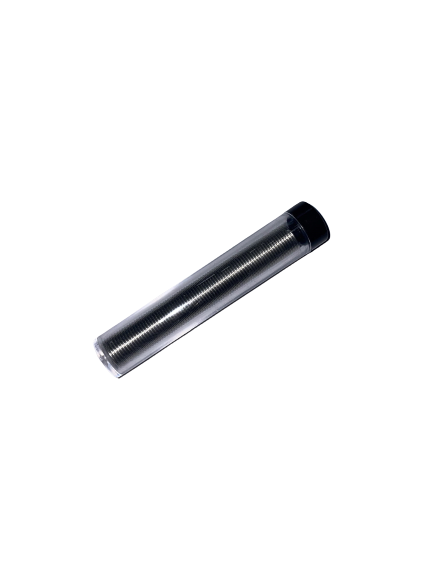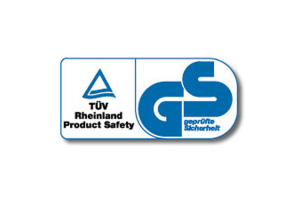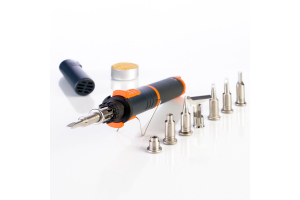
What is solder? What type of solder wire should you use? Soldering wire is a fundamental component in numerous electrical and electronic projects. Whether you're a seasoned professional or a hobbyist, understanding the intricacies of soldering wire is crucial for achieving reliable electrical connections. In this comprehensive guide, we'll delve into the world of soldering wire, exploring its types, applications, and best practices for optimal results.
What is Solder Wire? Soldering wire, also known simply as solder, is a fusible metal alloy used to join metal surfaces together. Typically, solder is composed of tin and lead, although lead-free alternatives are also available. When heated, solder melts and flows into the joint, creating a strong electrical and mechanical bond upon cooling.
So, which is the best solder to use? this comes down to the application and personal preference, but the main differences are outlined below.
Types of Soldering Wire:
Lead-based Solder: Traditional solder formulations contain a combination of tin and lead, with varying ratios depending on the application. Lead-based solder offers excellent flow characteristics and is commonly used in electronics assembly and plumbing. It is still a very popular type of solder amongsnt the soldering community, however lead solder can produce dust and fumes that are hazardous.
Lead-free Solder: Due to environmental concerns, lead-free solder has gained popularity in recent years. These formulations often substitute lead with metals like silver, copper, or bismuth. While lead-free solder may have slightly different properties, it meets stringent regulatory requirements and is suitable for many applications.
Flux-core Solder: Flux is a chemical agent used to clean and prepare metal surfaces for soldering. Flux-core solder integrates flux within the solder wire, eliminating the need for separate flux application. This type of solder is convenient for quick and efficient soldering tasks, ensuring proper wetting and adhesion. It is important to note, using flux containing rosin produces solder fumes that, if inhaled, can result in occupational asthma or worsen existing asthmatic conditions; as well as cause eye and upper respiratory tract irritation.
How is Soldering Wire Used? Soldering wire finds application across various industries and hobbies, including electronics, plumbing, jewelry making, and automotive repair. Some common uses include:
Electronics Assembly: Soldering wire is indispensable in the assembly of printed circuit boards (PCBs), where it creates electrical connections between components. Surface mount technology (SMT) and through-hole soldering techniques are widely used in electronic manufacturing.
Plumbing: In plumbing applications, soldering wire is used to join copper pipes and fittings. Proper flux selection is crucial to ensure clean and durable joints that withstand pressure and temperature variations.
Jewelry Making: Jewelry artisans utilize soldering wire to join precious metal components, such as gold, silver, and platinum. Soldering enables the creation of intricate designs and repairs damaged jewelry pieces.
Automotive Repair: Soldering wire plays a role in automotive repair and customization, such as repairing wiring harnesses, soldering electrical connections, and fabricating custom components.
Best Practices for Soldering Wire: To achieve reliable solder joints, follow these best practices:
Clean the surfaces: Ensure that the surfaces to be soldered are clean and free from oxidation, dirt, or grease. Use sandpaper or a wire brush to remove any contaminants.
Apply soldering flux: Apply a small amount of flux to the joint area to promote solder flow and improve wetting. Flux helps remove oxides and facilitates the formation of a strong bond.
Heat control: Use a soldering iron with adjustable temperature settings to avoid overheating the components. Excessive heat can damage sensitive electronic components or lead to poor solder joints.
Proper technique: Hold the soldering iron tip against the joint and apply solder to the heated area, allowing it to melt and flow evenly. Avoid excessive solder buildup or cold solder joints, which can compromise electrical conductivity.
Inspection: After soldering, visually inspect the joints for uniformity and completeness. Test the connections for continuity and mechanical strength to ensure proper functionality.
Conclusion: Soldering wire is a versatile and indispensable tool in various industries and hobbies, enabling the creation of durable and reliable connections. Understanding the different types of solder, their applications, and best practices for soldering techniques is essential for achieving optimal results. Whether you're assembling electronics, plumbing pipes, crafting jewelry, or repairing automotive components, mastering the art of soldering wire opens up a world of possibilities for creativity and innovation.





